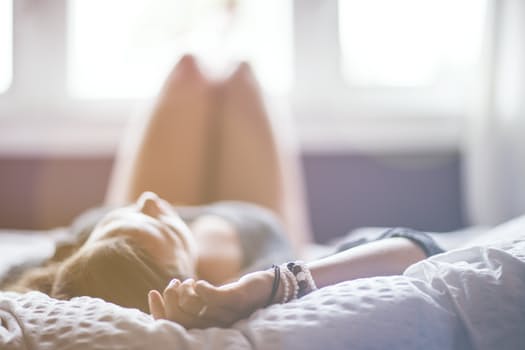Understanding sleep – the first step to better sleep. We all know that a good night’s sleep means a better mood and greater productivity the next day, amongst many other health benefits. So then, why do so many of us stay up that little bit too late doing all the wrong things and jeopardise our potential for sufficient rest? (Who doesn’t unnecessarily check Facebook that last, millionth time before you end the night or watch TV that little bit longer than what your body calls for?).
There are many well-known sleep hacks to help you off to the land of nod but they also happen to be boring and a little regimented. But if we do follow these sensible sleep tips and start to surrender our evening to our sleep needs then sleep becomes easy and something to look forward to and not dread or struggle with. Once you establish a regular sleep pattern, the thought of going to sleep becomes even more appealing than a last-minute check of your emails.
One thing that may help people to let go of nighttime distractions – and listen more to the sleep cues of the body – is acquiring some understanding of one’s sleep processes. If you understand the highly complex nature of sleep you may be more likely to respect your sleep needs and make better sleep hygiene choices and get that awesome night’s rest you deserve.
Sleep is a dynamic behaviour involving lots of brain activity. Scientists speculate that the complexity of sleep architecture is specific to optimise physical and mental recuperation such as memory consolidation. There are two main sleep systems determining your ability to get to sleep, one being your sleep drive and the other being your circadian rhythm. Your sleep drive builds with being awake, is depleted with rest and blocked with caffeine. Your circadian rhythm is an endogenous, physiological phenomenon, like a 24-hour internal clock cycling between alertness and sleepiness. It is determined by such process as the hypothalamus and hormones. The time when someone is most likely to fall asleep is when one’s sleep drive is maximal and aligns with their circadian rhythm. In order to know when this time is, one must take notice of their sleep cues, such as sore and tired eyes, a wave of restfulness, a dip in alertness or a simple urge to go to bed. If such cues are ignored, you might miss your opportunity and end up staying awake later than desired waiting for the next alignment.
Another thing to note is that sleep can be thought of as occurring in 90-minute cycles with the deepest and most restorative sleep occurring in a particular phase of the cycle and time of the evening. So it matters not only how much sleep you get but when you get it. We now know that most deep sleep occurs in the hours 11pm to 3am. If you wake before the end of a cycle you may experience that feeling of grogginess called sleep inertia. So, aim to time your sleep so that you get enough hours and wake after a full cycle (visit www.sleepyti.me to calculate your sleep regime).
There are other external factors that affect the quality and duration of your sleep such as late-night exercise, a hot environment, evening alcohol and toxins. Experimenting with evening rituals will allow you to develop a soothing routine to aid good quality sleep.
Ultimately the best sleep for you is the one you get when you feel you need it and for long enough. This is most likely to occur when you go to bed and wake the same time every day, take daily exercise, limit alcohol and evening alerting activities, and sleep in a cool, dark and calming environment. But this all requires an element of radical acceptance, surrender and self-compassionate discipline. Yoga will help cultivate these accommodating traits.
References
- www.sleepyti.me, accessed 29/1/17
- Consensus conference panel, Watson et al., Recommended amount of sleep for a healthy adult: A joint consensus statement of the American Academy of Sleep Medicine and Sleep Research Society. J Clin Sleep Med 2015; 11: 591.
- Hirshkowitz et al., National Sleep Foundation’s updated sleep duration recommendations: final report. Sleep Health 2015; 1: 233.






